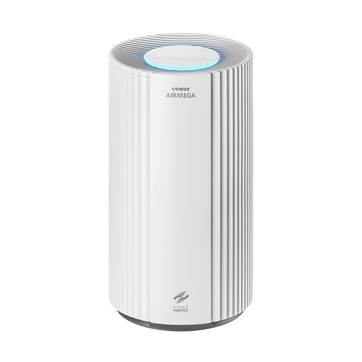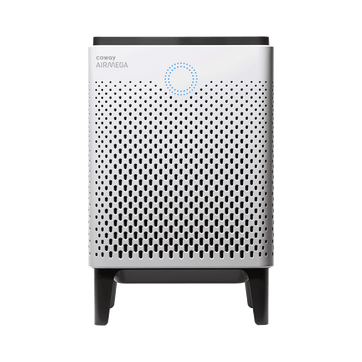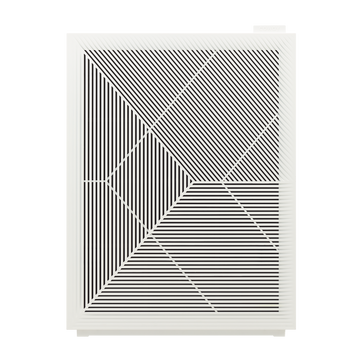
Are women more susceptible to environmental illness?
It’s widely accepted among medical professionals that women are more likely than men to become sick from environmentally-related illnesses. No one knows the reasons for sure, but researchers and medical professionals point to a few possible explanations related to air quality.
Cleaning Products
While in this day and age women and men often share house cleaning duties, the job still tends to be done by women who, in the process, are exposed to toxic products. Home cleaning products can produce volatile organic compounds (VOCs)—gases emitted from various chemicals—and particulate matter, which are small, potentially unhealthy particles that can be carried by the air and inhaled. Some examples of harmful chemicals: perchloroethylene , which is found in dry-cleaning solutions, spot removers, and carpet and upholstery cleaners; and butoxyethanol, used in window, kitchen and multipurpose cleaners.
Cosmetics and Personal Care Products
Women are more likely to use products such as make-up, hair dye, and perfume—an estimated 12 a day—many of which may contain multiple potentially harmful ingredients. They include benzaldehyde, benzyl acetate, and ethyl acetate, among others, which can cause anything from fatigue and dizziness to kidney damage.
Female-Dominated Jobs
Many occupations that largely employ women also involve exposure to harmful ingredients. Hair stylists, estheticians, and nail technicians, for example, come in constant contact with many chemicals that can be unhealthy, especially for women of childbearing age. Nail polish, for example, often contains toluene, which has been linked to spontaneous abortion, as well as formaldehyde, which has been connected to reproductive and endocrine system disorders.
Physiological Differences
Women react differently from men when exposed to the same toxic substances in some situations. For example, studies have shown that when women and men both come in contact with potentially harmful chemicals in the workplace, women report having more symptoms. This may be due to women’s body weight, as well as hormonal differences that affect the way a person’s body responds to chemicals.
Socioeconomic Inequities
In North America, poverty rates are higher among women than men, potentially exposing women more frequently to environmental toxins, such as asbestos, lead-based paint, and mould. They also may be more likely to live in an area with contaminated soil or close to an air-polluting factory or a landfill site.
How can women protect themselves? One solution is to employ fewer potentially harmful products with more natural ingredients, when possible. Another is to use a smart air purifier with a HEPA filter, like the Coway Airmega, which can help eliminate unhealthy particles in the air.
Disclaimers
1Coway air purifiers has been proven to trap dust, pollen, dander, viruses and bacteria in the air based on KCL (Korea Conformity Laboratories) testing.They have been tested in a 30㎥ size chamber according to the Korea Air Cleaning Association standard (SPS-KACA 002-132:2022 Modified) to measure the 0.01㎛ size of particle removal rate. It was tested on maximum airflow speed in normal room temperature and humidity conditions. The performance may vary in the actual living environment of customers.
→ Tested with Airmega Aim, 150, 160, AP-1216L, AP-1512HH, AP-1512HHS, 200M, Icon, IconS, 230, 240, 250, 250 Art, 250S, 300, 300S, 400, 400S, ProX
299.97% of viruses, bacteria, fungi and pollen were verified to be removed from the air for Coway air purifiers which have Green True HEPA™ filter applied based on the Japan Food Research Laboratories(JFRL) testing according to JEM 1467 standard.
→ Tested with Coway Airmega AP-1512HH, AP-1512HHS, 250, 250 Art, 250S, 300, 300S, 400, 400S
→ All tested by JFRL and received above result within below time.
All tested by JFRL and received above result within below time.
- Virus: Tested with Escherichia coli phage ΦX174 NBRC 103405, 60 minutes
- Bacteria: Tested with Staphylococcus epidermidis NBRC 12993, 60 minutes
- Fungi/Mold: Tested with Penicillium citrinum NBRC 6352, 60 minutes
- Pollen: Tested with Cedar Pollen extract, 60 minutes
3Aerosol test conducted in a Biosafety level 3 laboratory with two Coway air purifier models, Coway Airmega 250 and 400 for removal of SARS-CoV-2 Aerosol by US based MRI Global, a not-for-profit laboratory and partner of US Department of Defense. The test was conducted in a 13.1ft3 chamber. Virus was aerosolized for 15 minutes and the product was turned on high for 2 minutes. Result showed each product effectively removed over 99.98% of the SARS-CoV-2 in 2 minutes. This is a result from a laboratory experiment condition and result may vary in different conditions. This result does not imply it kills SARS-CoV-2 or prevents the transmission of Covid-19. Coway Airmega 250S and 400S are identical to the tested models and has equal performance with an additional mobile connectivity function.
4The concentration of ammonia, acetaldehyde and acetic acid were proven to be removed within 30 minutes by FCG Research Institute, Inc. Human Life Science Lab. It is not a demonstration result in the actual use space. Not all odors and gases may be supported. → Tested with Coway Airmega 150, 160, AP-1512HH, AP-1512HHS, 400, 400S
5The coverage area of the air purifier is based on an area where the air cleaner can make two air changes per hour (ACPH). An air change per hour translates to how many times an air purifier can clean an area, assuming the height of a ceiling to be 8 ft, in one hour. Therefore ** means two air changes per hour means that the cleaner can clean the area once every 30 minutes and * means air changes per hour means that the air purifier can clean the area once every 60 minutes.
10Terms and conditions apply. Discounts, including promotions, coupons, bundle discount and subscription discount, cannot be stacked on top of other coupons. During promotional periods, discount codes will not be able to be applied to orders. Promo codes may apply to products only—filters, accessories, and new products within 3 months of the release date are not included.




















